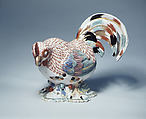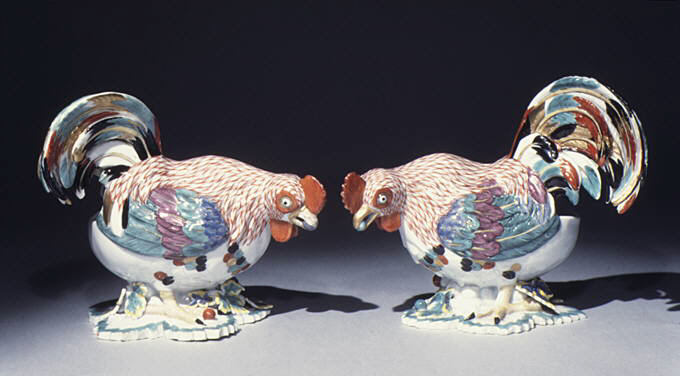Chinese rooster (one of a pair)
Manufactory Meissen Manufactory German
Not on view
Porcelain birds have their origins in the princely tradition of maintaining collections of living animals and birds in menageries and aviaries, which were viewed as microcosms of the universe, and emblems of royal power and enlightenment. These collections often included exotic birds such as parrots, admired for their rarity, as well as more familiar native species.
In 1731 the Meissen manufactory began a new genre in European porcelain, producing several hundred life-size and near-life-size porcelain birds and animals, many destined for the Japanese Palace of Augustus the Strong, Elector of Saxony (1670–1733). To create them, factory modelers found inspiration in nature, looking both to living and stuffed specimens, as well as zoological illustrations and Asian porcelain precedents. The great Meissen modeler Johann Joachim Kändler is known to have copied from life the birds kept at the royal aviary at Schloss Moritzburg.
Surviving prints and drawings of the period indicate that porcelain birds, animals, and vases were placed on gilt wood brackets arranged in decorative, symmetrical patterns. An eighteenth-century English visitor to the Japanese Palace, Jonas Hanway, described this manner of display: "The long gallery in the second story had already two marble chimney-pieces, each adorned with near 40 very large pieces of porcelain, of birds, beasts, and vases, ranged to the height of above 20 feet in a most superb taste…."
[Elizabeth Sullivan, 2013]
Due to rights restrictions, this image cannot be enlarged, viewed at full screen, or downloaded.
This artwork is meant to be viewed from right to left. Scroll left to view more.



